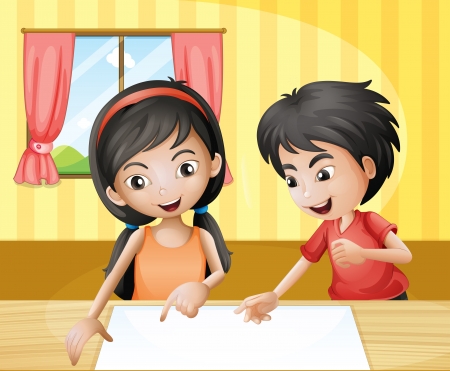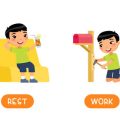Understanding American Feng Shui for Kids’ Spaces
Creating a calm and peaceful bedroom for kids starts with understanding the basics of Feng Shui and how these principles can be adapted to fit American lifestyles. Feng Shui, which means “wind” and “water” in Chinese, is all about arranging spaces to encourage positive energy flow, known as “chi.” When used thoughtfully in a child’s bedroom, it helps promote relaxation, safety, creativity, and restful sleep.
What Is American Feng Shui?
American Feng Shui takes traditional ideas from Chinese Feng Shui and adapts them for modern homes in the United States. It focuses on practical solutions that fit busy family routines, contemporary furniture styles, and popular color schemes. The core concept remains: organizing the environment to support well-being, especially for children who need both comfort and inspiration in their personal space.
How Energy Flow Affects Children’s Well-being
The way furniture and objects are placed can influence how your child feels in their room. For example, clutter or sharp corners may create restless energy, while open spaces and rounded edges help kids feel safe and relaxed. Good energy flow can:
- Encourage better sleep
- Support learning and creativity
- Reduce anxiety or stress
- Create a sense of order and security
Main Principles of American Feng Shui for Kids’ Bedrooms
| Feng Shui Principle | How It Helps Kids | Easy Application Tips |
|---|---|---|
| Clear Pathways | Makes moving around easy and safe | Keep floors tidy; avoid blocking doors with toys or furniture |
| Smooth Energy Flow | Promotes calmness and focus | Avoid overcrowding; arrange beds so kids see the door but aren’t directly in line with it |
| Natural Elements | Connects children with nature, boosts mood | Add plants (safe for kids), wooden décor, or nature-inspired prints |
| Soft Colors | Soothes emotions and supports sleep | Use gentle blues, greens, or neutral shades on walls and bedding |
| Personal Touches | Makes kids feel secure and happy in their space | Display favorite art, photos, or crafts made by your child |
By using these simple American Feng Shui techniques, parents can design a bedroom that not only looks great but also helps their children thrive emotionally and mentally.
2. Choosing Calming Colors and Materials
When it comes to designing a kids’ bedroom that feels calm and peaceful, color and material choices are key. In American Feng Shui-inspired design, the goal is to create a soothing environment that helps children relax, feel safe, and sleep well. Let’s explore how you can use popular color palettes and natural materials, all while keeping American trends and family lifestyles in mind.
Color Palettes for a Peaceful Kids’ Room
American parents and designers often gravitate toward colors that evoke serenity and warmth. Soft blues, gentle greens, and neutral tones like beige or light gray are favorites for bedrooms. These shades are believed to promote relaxation and help balance energy in the space. Avoid overly bright or neon colors, as they can be too stimulating for bedtime.
| Color | Feeling | Popular Uses |
|---|---|---|
| Pale Blue | Calm, serene | Walls, bedding, curtains |
| Sage Green | Restful, natural | Accent wall, rugs, décor |
| Warm Beige | Cozy, grounding | Main walls, furniture finishes |
| Lavender | Soothing, gentle | Pillows, artwork, accessories |
| Soft Gray | Balanced, modern | Bedding sets, area rugs |
Natural Materials That Support Comfort
Feng Shui encourages the use of natural materials because they connect us with nature and add warmth to any room. In American homes, popular choices include wood furniture (like oak or maple), cotton bedding, wool rugs, and woven baskets for storage. These materials feel comforting to touch and are durable for active kids.
- Wooden Beds & Dressers: Choose solid wood pieces with rounded edges for safety.
- Cotton Bedding: Look for organic cotton sheets and blankets in calming colors.
- Wool Rugs: Soft underfoot and great for play areas—plus they help dampen noise.
- Bamboo Blinds: Offer privacy while letting in natural light during the day.
- Wicker Baskets: Perfect for toy storage; they add texture and keep clutter at bay.
Tips for Mixing Colors and Textures
You don’t have to stick with just one color or material—layering different soft shades and textures makes the room feel cozy but not overwhelming. Try pairing pale blue walls with a natural wood crib or mixing sage green accents with woven baskets and plush throws. Remember to keep patterns simple to maintain a tranquil vibe.

3. Optimizing Furniture Placement for Good Flow
Creating a calm and peaceful kids’ bedroom with American Feng Shui starts with smart furniture arrangement. Where you place the bed, desk, and storage can make a big difference in how your child feels and moves around their room. Here are some simple tips to help maximize open space while ensuring safety and easy access for kids.
Bed Placement
The bed is the heart of any bedroom, especially for children. To promote restful sleep and good energy flow:
- Face the Door, Not Directly In Line: Position the bed so your child can see the door from their pillow, but don’t put it right in front of or behind the door. This helps them feel safe and secure.
- Avoid Windows Behind the Bed: Try not to place the bed directly under or in front of a window. This can disrupt sleep and make the space feel less grounded.
- Leave Space on Both Sides: If possible, leave a small gap on each side of the bed so your child can get in and out easily.
Desk Arrangement
A well-placed desk supports focus and creativity during homework or craft time:
- Natural Light: Place the desk near a window for good natural light, but avoid having your child’s back to the door. Facing a wall can help minimize distractions, but make sure they have something pleasant to look at, like art or plants.
- Easy Access: Keep pathways clear so your child can move between their bed and desk without bumping into things.
Smart Storage Solutions
Toys, books, and clothes need their own homes! Use storage options that keep clutter off the floor and easy for kids to reach safely.
| Storage Type | Placement Tips | Benefits |
|---|---|---|
| Shelves | Mount lower on walls within arm’s reach | Encourages independence and tidiness |
| Bins & Baskets | Place under beds or in closet corners | Keeps toys organized and floors clear |
| Dressers | Away from windows and doors; anchor to wall if tall | Adds stability and safety; prevents tipping |
Open Space Matters
A clutter-free floor gives your child room to play, stretch, and relax. Arrange furniture along the walls as much as possible, leaving the center of the room open. Use multi-purpose furniture like beds with built-in drawers or benches that double as toy chests to save space.
Safety First!
- Avoid Sharp Corners: Choose rounded-edge furniture when you can.
- Cord Management: Tuck away cords from lamps or electronics to prevent trips and falls.
- No Tall Furniture Near Beds: Keep heavy or tall items away from sleeping areas to reduce accident risk.
By thoughtfully arranging each piece, you’ll create a kids’ room that feels calm, spacious, and safe—a perfect environment for rest and play.
4. Creating Zones for Sleep, Study, and Play
One of the key principles of American Feng Shui for kids’ bedrooms is to divide the space into clear zones that support different activities. This helps children feel calm, organized, and focused in their room. With a few common furnishings and a little creativity, you can easily create dedicated areas for sleep, study, and play that work well with American lifestyle and products.
Why Zoning Matters in Kids’ Bedrooms
When each part of the room has a special purpose, it becomes easier for your child to relax at bedtime, concentrate during homework, and let their imagination run wild during playtime. Zoning also helps keep clutter under control and gives your child a sense of order and security.
How to Create Distinct Zones
| Zone | Main Purpose | Furnishings & Decor Ideas | Tips |
|---|---|---|---|
| Sleep Zone | Restful sleep and relaxation | Twin or full-size bed with cozy bedding Dimmable night light or lamp Soft area rug Blackout curtains |
Keep this area free from screens and loud toys. Choose calming colors like soft blue or pale green. |
| Study Zone | Focused learning and homework time | Sturdy desk Comfortable chair Shelf for books and supplies Corkboard or whiteboard |
Set up near a window for natural light. Use bins or organizers from stores like Target or Walmart. |
| Play Zone | Creative play and activities | Open floor space Toy storage bins Kid-sized table Wall decals or art display area |
Add a colorful rug to define the area. Keep favorite toys within easy reach using labeled baskets. |
Arranging the Room for Good Flow
If possible, place the bed so your child can see the door but isn’t directly in line with it—this position promotes safety and relaxation in Feng Shui. The study desk should be away from distractions like the TV but close enough to the rest of the family if your child needs help. Try to separate the play zone from the sleep zone using an open bookshelf or a low dresser as a gentle divider.
Easy Zoning with Everyday American Products
- IKEA KALLAX shelves: Use these popular cubed bookshelves as dividers between zones—theyre affordable and versatile.
- Pillowfort by Target: Offers playful rugs, bean bags, and bedding to help define each space.
- Labeled Storage Bins: Find colorful options at Walmart or The Container Store to keep study supplies and toys organized by zone.
- Removable Wall Decals: Use them to mark each zone—think stars over the bed, ABCs above the desk, and animals by the play area.
Quick Tips for Success
- Edit often—rotate toys, books, or decor based on your child’s age or interests.
- Avoid overcrowding; leave some empty space for movement and new ideas.
- Let your child help choose colors or decorations for each zone—they’ll feel more comfortable and proud of their space!
5. Adding Personal Touches and Mindfulness Elements
Personalizing your child’s bedroom is a wonderful way to create a comforting and peaceful environment. American Feng Shui encourages using meaningful items that reflect your child’s personality and family connections, while also supporting a sense of calm and mindfulness. Here are some easy ways to add those special touches:
Personalize with Meaningful Decor
Adding personal items makes the space feel safe and unique for your child. Consider these ideas:
| Item | Why It Helps | Examples |
|---|---|---|
| Family Photos | Creates a sense of belonging and love | A framed photo on the nightstand or dresser |
| Handmade Crafts | Boosts creativity and pride | Paintings, drawings, or DIY wall art |
| Name Signs or Initials | Makes the room feel truly theirs | Wooden letters or custom signs above the bed |
| Award Ribbons or Trophies | Encourages confidence and achievement | Shelf display for medals or trophies from school activities |
Add Comfort Objects and Sensory Items
Comfort items help kids feel secure, especially at bedtime. Soft textures and sensory objects can make the room more relaxing:
- Stuffed Animals or Favorite Blankets: Place them where your child can easily reach them for comfort.
- Pillows in Calming Colors: Use blues, greens, or pastels to promote restfulness.
- Soft Rugs or Floor Cushions: Offer a cozy spot for reading or playing quietly.
- Sensory Lamps or Nightlights: Choose gentle lighting options that can be dimmed at night.
Integrate Plants for a Peaceful Vibe
A small plant in the bedroom can improve air quality and create a calming atmosphere. Kid-friendly options include:
- Pothos: Easy to care for and grows well indoors.
- Spathiphyllum (Peace Lily): Known for its air-purifying qualities.
- Bamboo: Symbolizes growth and good luck in Feng Shui.
Simple Tips for Mindful Spaces
- Create a “quiet corner” with soft seating for reading or relaxing.
- Add a jar of gratitude notes where kids can write what made them happy each day.
- Hang positive affirmations or inspiring quotes at eye level.
The Power of Personalization in American Feng Shui
The right mix of personal touches, comfort objects, and natural elements helps turn any bedroom into a peaceful retreat tailored just for your child. These mindful details support emotional wellbeing and encourage restful sleep every night.


